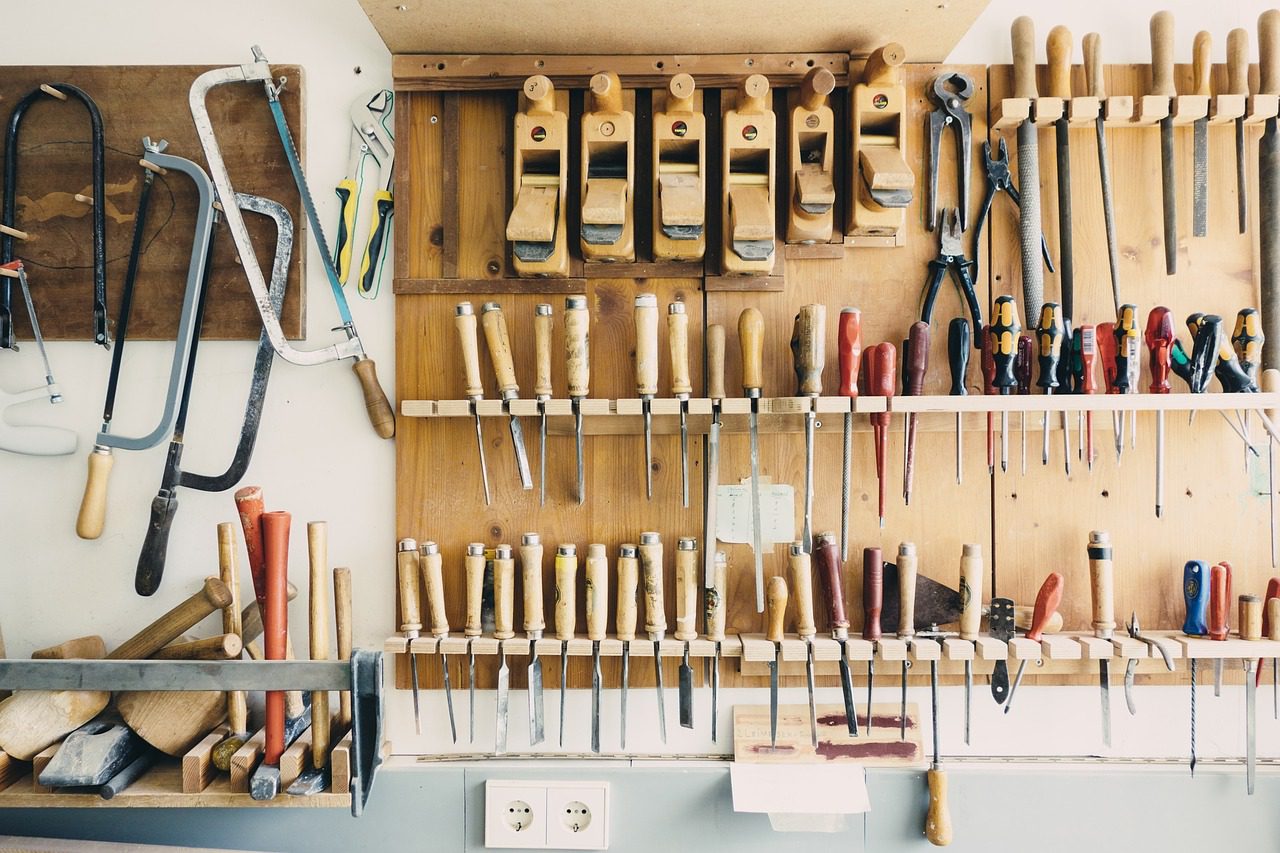Moisture can do a lot of damage to the items inside your shed, garage, or other outdoor storage solutions if not adequately protected. If it has furniture or books, like you might find in a shed or garage, moisture can cause the wood and paper to rot faster. Fluctuations in temperature and humidity are a precursor to rust and wood warping.
How Humidity Affects Different Materials
In the air, there’s always an amount of water vapor. We measure its percentage as humidity. The only way to find a place without humidity is to go where there’s no air; or to another planet. The water floating in the air condenses into microscopic droplets, heavy enough to fall onto items and permeate through them.
You can see this phenomenon on a larger scale in dew. The size of these droplets are dependent on the amount of water in the air and how much the temperature fluctuates.
How Humidity Affects Wood
Wood suffers two effects from humidity: warping and rot.

Warping comes from the microscopic droplets getting trapped in between the wood fibers, then expanding either due to the heat or the collection of more water. It doesn’t even need to feel damp to affect it. For the most part, the thinner the wood, and the more the temperature and humidity fluctuates, the greater the warping.
Rot of course, means the wood is breaking down. High humidity can help fungus, microorganisms and bacteria thrive in the wood, speeding up the process.
How Humidity Affects Metal
When water collects into droplets on iron, steel, and other forms of iron-based metals, it creates tiny pits along the surface, which then oxidize and turn to rust. Even stainless steel suffers from this problem, though much slower than the others.
The only way to prevent it entirely is to use a metal that doesn’t rust. The pits created by the water effects other metals too, but at such a slow pace that your grandchildren might not even notice.
How To Prevent Damage To Your Assets
The first thing you can do is make sure your outdoor storage solutions are insulated and sealed. Holes and poor insulation increase the effects of the natural weather outside, including temperature and humidity.

The temperature exasperates the effects of humidity, which is the main threat to your stuff. These fluctuations drive the water deeper into wood and paper and create larger pits in the metal.
The next best thing you can do is lower the humidity. The easiest way to do that is with a dehumidifier. An outdoor desiccant dehumidifier will passively bring your humidity down in the space, which tends to be much higher than you might find in an air-conditioned home. On the other hand, an electric shed dehumidifier can keep a specific humidity level and drain the water away with a hose but requires your shed or garage to be powered.
What’s The Right Humidity Level For My Outdoor Storage Solutions?
If you don’t know what type of material you have, it’s best to go with the lowest humidity needed.
| Material Name | Untreated Wood | Treated Wood | Untreated Wood |
| Humidity Percentage Threshold To Damage The Material | 26% | 51% | 76% |
| Amount of Time Before You See Visible Changes To The Material | 6-7 days | 6-7 days | 6-7 days |
| Material Name | Iron | Steel | Galvanized Steel | Stainless Steel |
| Humidity Percentage Threshold To Damage The Material | 51 | 51% | 71% | 71% |
| Amount of Time Before You See Visible Changes To The Material | 24-48 hours | 4-5 days | 20 years | 50 years |
The Types of Wood
Different types of wood have various densities in their fibers, changing how much they can resist moisture. However, what you want to look out for is the difference between untreated, treated, and varnished wood. As long as the seal remains from the varnish, it’ll last longer than the other two. Treated wood will naturally last longer than untreated wood.
The Types of Metal
The only metal you should worry about for the average person is iron-based metals. These break down like this: iron, steel, galvanized steel, and stainless steel.
Iron and steel are self-explanatory, but galvanized steel is steel coated in zinc to help prevent rusting. Stainless steel is steel that’s mixed with chromium. That means that while galvanized steel is less prone to rusting as long as its coating is still there, stainless steel is resistant throughout the material.
That is to say; stainless steel is the least affected, followed by galvanized steel, regular steel, and finally iron.
The Good News
It only takes about a moment to set up a shed dehumidifier, even if your storage isn’t adequately insulated. If you don’t have the time or the money to fix it, focus on holes in the walls, roof, and corners. Then, make sure the doors and windows have rubber gaskets and are working. You can usually find these gaskets for relatively cheap at a home improvement store. They only take about 10-15 minutes to install.




I’ll be moving out of my parents’ house in a month and it’s great to look up this article about protecting my things from molds when I put them in a storage unit. I didn’t know that there are outdoor and electric desiccants that you can use to absorb moisture from a room. I’ll really consider these tips, especially that I have a lot of clothes and shoes that I’d dread having molds on. https://www.usstorage.us/